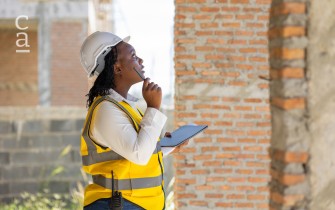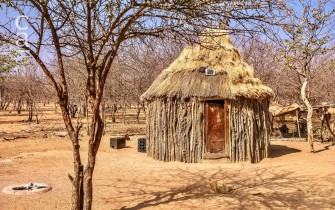Construction opportunities in Sub-Saharan Africa
Is your company prepared to take advantage of construction opportunities in sub-Saharan Africa?

Globally, countries have started re-opening their economies for business following the pandemic. In sub-Saharan African (SSA), countries are resuming projects that were paused or bringing new ones into their pipeline.
So, now is the time for investments into projects that can span years and build long-term partnerships.
But, will these projects be only available to the companies that have established relationships with the respective SSA governments? Or do new companies have a chance?
In SSA, Ghana is expected to benefit from a commitment to deliver strategic infrastructure projects. In Tanzania, power and transport projects are likely to push its growth number well above average for the African continent. In the busy markets of Kenya and Nigeria, there are big opportunities facilitated by improvements in transport and energy.
Investors and African governments are exploring – or have already committed – to various major infrastructure projects to take place over the next 10 years. There is an estimated $2.5 trillion worth of projects in the pipeline to 2025. Many of these are still in the feasibility stage. But we’ve looked at several that are in train, or soon to be, here in this post. Most of these projects are under feasibility studies, so many will not come to fruition. But if even just 50% of the projects come on stream, that is an impressive source for investment into future infrastructure activity. And there are opportunities for new and established investors in these sectors.
How to set yourself apart for entry to the lucrative construction industry
With the growth of the industry and the massive infrastructural projects taking place, stakeholders and interested parties now have the following question – how do they get into the African market?
In this blog post, we say how you position yourself and use the information on the SSA construction industry to your advantage.
As part of the process of evaluating your options to enter the African market, we recommend looking at strategies to improve your chances of acceptance. We’ve outlined 6 of them for you below.
- Improve efficiency in construction projects
Improved efficiencies will come from changes to how we plan, manage, and execute construction projects. Now, the construction industry generally has a low margin. When placed alongside the increase in construction project complexity, it shows why we need to focus on improving efficiency. So, make sure your company is innovating and putting in measures for better efficiency and gains in construction projects.
- Understand your market
The country you enter has implications for the length of your stay and the possibility for future contracts. So, in your due diligence, assess the projects in the pipeline, the success of previous engagements, and the returns that were possible.
A construction market assessment can guide you here so you can make the best possible decision when it comes to market entry point, and projects to bid on.
- Adopt an integrated approach in the industry
There are many problems to successfully executing construction projects. This is especially compounded when you’re working in a foreign environment with different dynamics at play.
An integrated approach to construction gives you the necessary structure to successfully execute. You need to know how to adapt to localised capacity constraints based on the country’s construction costs, the strength of the private sector, and assessing government stability.
- Embrace digital technology
Digital technology adoption in the construction industry have been disruptive to the traditional way of doing things and contribute to the increased efficiencies and safety. Take, for example, the use of drones in the industry. It can handle inspections in situations deemed too risky to a person’s life. Other areas where digital technology can and does make an impact is the adoption of tech for repetitive work.
Also, artificial Intelligence has adjusted the way we approach planning and development. Virtual and augmented reality of projects facilitate better project planning as well as reduce costs associated with the development timeline of a job.
- Look at adding value to projects
Green construction is not novel to African markets. Investors and construction firms would do well to adopt strategies that support sustainable practices and environmental growth. For example, the adoption of green cement is being driven in part due to the energy efficiency and sustainability drive for both infrastructure and business construction projects.
- Assess new partnership models
As McKinsey & Company noted, there is significant infrastructure gap in Africa, despite a collective investment of US $77 billion between 2013 and 2017. Most of this investment went to the energy and transport sectors.
New public-private sector partnerships will likely be the way forward for many of these infrastructural developments. This brings numerous opportunities for investors in the SSA construction industry.
If you are assessing the possibility of entering the construction market in SSA, consider the partnership model necessary for successful delivery and funding of the projects. You’ll also need to consider a life-cycle approach that bestows the necessary attention to all stages of the project to ensure you can get the full returns on your investment.
Margins in this industry have historically been low, even as they provide lucrative gains. Coupled with the rising costs of materials and labour, this will place pressure on firms to maintain their margins, especially coming off the downturn forced by the COVID-19 pandemic.
But following the above approaches can lead to more successful construction businesses ready to take advantage of the many opportunities awaiting just the right partner.
Are you ready for the SSA construction opportunities?
Do you have the resources to take advantage of the construction opportunities in Sub-Saharan Africa?
If you’re new to the Sub-Saharan region, the good news is that many other companies have made a successful entry into doing business locally.
An in-depth market analysis will also support your entry initiative as it can outline the players you need to know and what successes have been attained by other companies before you.
So, even though others are ahead, now is actually the perfect time for you to enter these markets. You’re in a better position to determine which country gives you the best potential for a return on your investment. You can assess the potential risks and rewards based on the history of the companies already on the ground and the projections for future growth.
If you’re already on the ground, your current immersion might inadvertently blind you to other opportunities or the threats and risks that are on the horizon. So, a construction industry report can give you insights into the market from a competitive standpoint.



